Carving (art cutting of fruits and vegetables) is becoming increasingly popular. After all, this is not only an interesting and creative hobby, but also a way to decorate the table with beautiful compositions. Therefore, it is worth considering the common types of carving knives, the features of their choice and the basic rules for use.
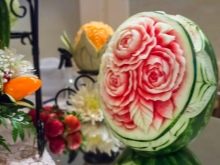
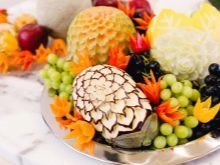
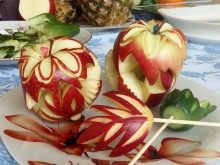
Why do we need special tools?
To get acquainted with the art of carving and the first lessons on it, a universal kitchen knife will be quite enough. However, in order to apply thin patterns to the surface of fruits and vegetables, cut spirals, garlands and other figured elements from them, make figured holes in them and make grooves and slices of equal thickness, specialized sets will be needed.

Varieties
Currently, the main types of tools for decorative cutting of vegetables and fruits are the following.
- Thai knife - this tool has a thin and narrow pointed blade with a small length relative to the handle and low weight. Two subtypes of these products are common - with a straight and sickle-shaped blade. In most cases, they have a flat blade, but there are options with small cloves for working with soft foods (for example, tomatoes).
With the help of such products, you can cut almost any element of the composition, but the main purpose of the knives is to make unique small details. This tool will allow you to give your work a personality.
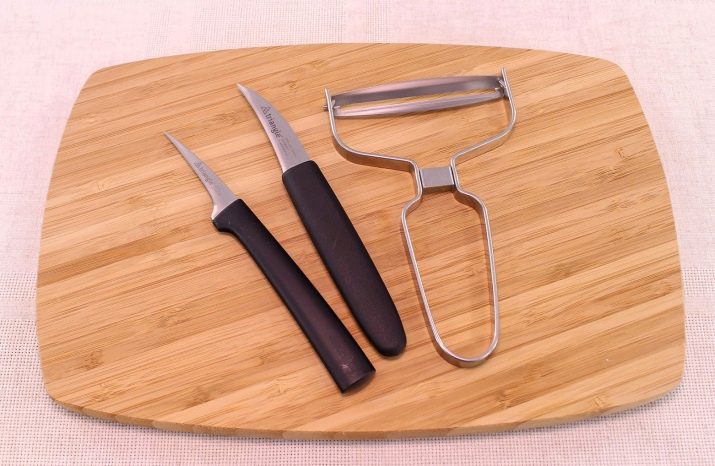
- Carving Knives - the name of these products comes from the German word "kerben", which means "notch, make grooves" in translation.The main task of the tool is to create notches. The shape of the holes made with it depends on the shape that the blade has.
Currently, the most common carbohydrate knives with square, oval, round, V-shaped, triangular, semicircular and curly-shaped blades. Sometimes there are ribbed options that allow you to make grooves of complex shape.
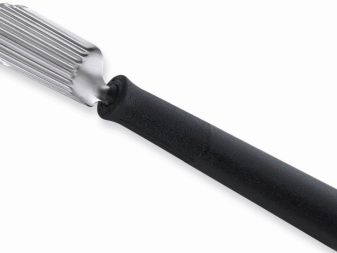
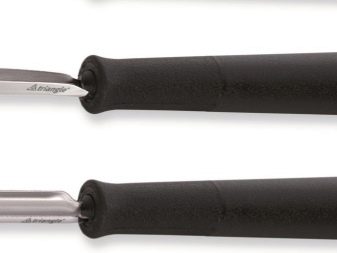
- Engraving knives - at first glance, they look a little like knives, since they are a closed cutting edge of a complex profile on the handle. Use them to apply repeating grooves and linear patterns to the surface of vegetables and fruits.
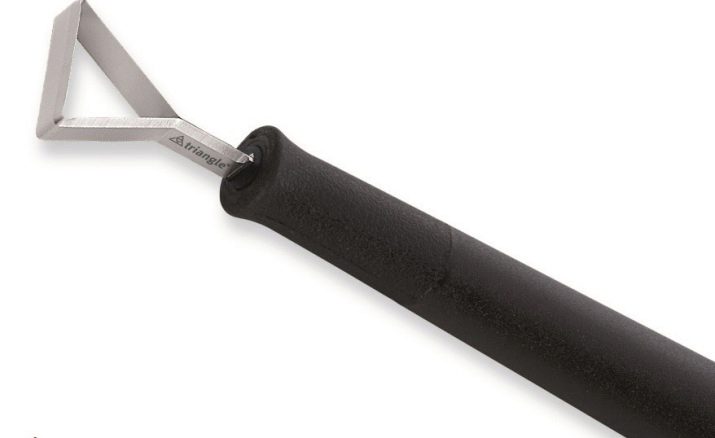
- Noisettes - These original knife and spoon hybrids allow you to easily and quickly cut the spherical and hemispherical elements of your composition. In addition, with their help it is convenient to extract pulp and seeds from fruits.
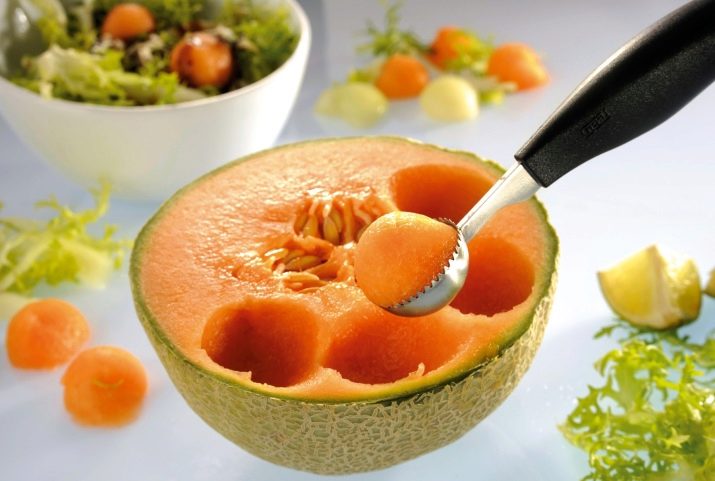
- Channeling tools - allow you to cover the surface of the products with even furrows, as well as cut them in the form of straws or thin strips.
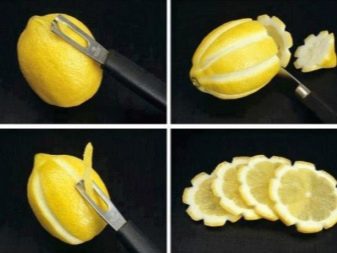

- Corrugated Calibration Knives - have the shape of a corrugated ridge and allow you to cut pieces of products with wave-shaped faces.
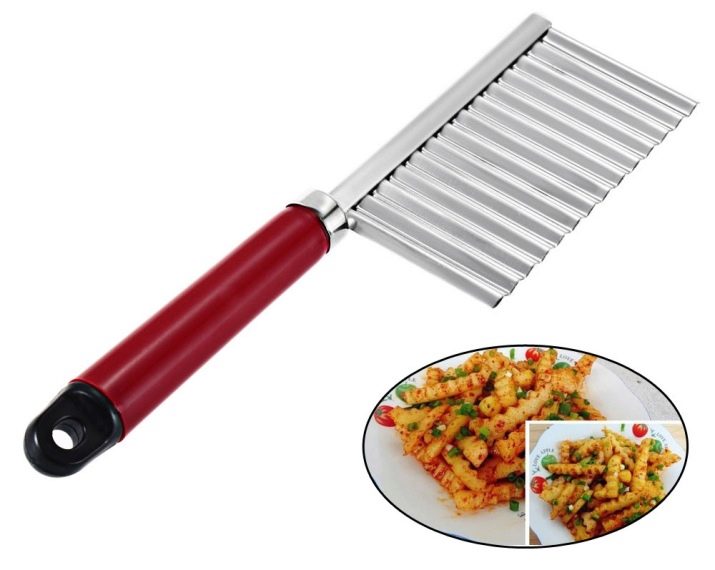
- Serpentinorez - are used for beautiful cutting of fruits and vegetables in the form of a serpentine, usually arranged on the principle of a pencil sharpener. The tool is like a funnel with blades inside.
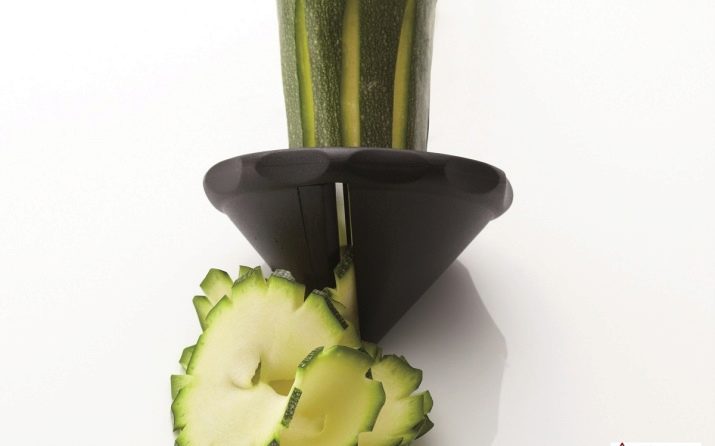
- Spiral knives - a variation of serpentinorez, which allows you to cut products in the form of a thin spiral or zigzag. Outwardly similar to an hourglass or funnel.
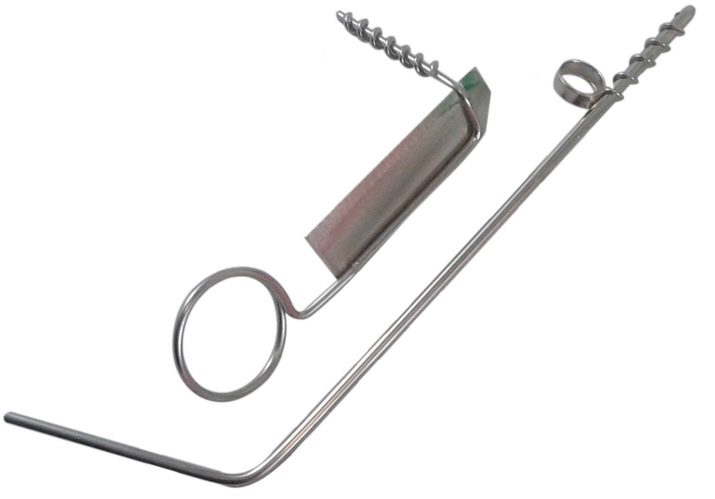
- Screw knives - used to remove pulp and create elements in the form of flowers.

- Zest knives - allow you to properly remove the zest of citrus fruits.
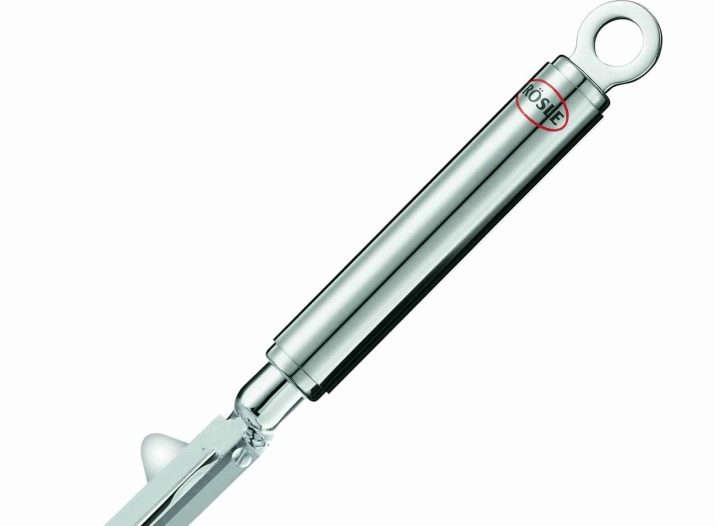
- Hair curlers - this device allows you to easily and quickly cut garlands from solid and oblong vegetables like cucumbers, zucchini and carrots.
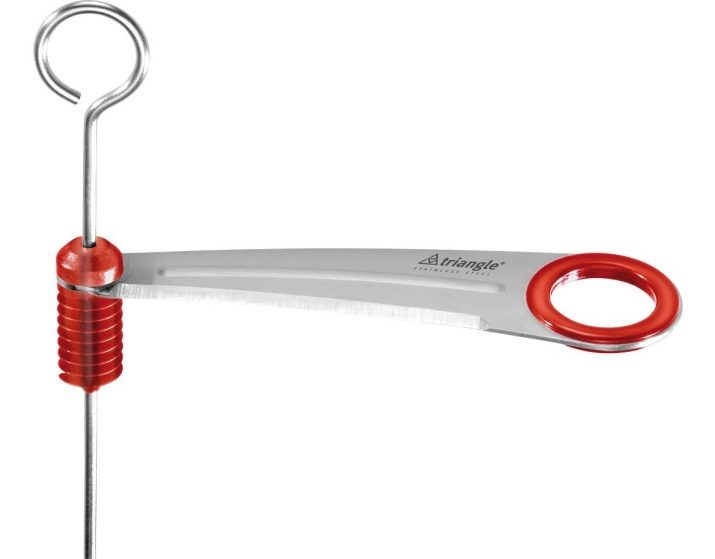
Optional equipment
In addition to knives, other kitchen tools are often used for carving:
- peeler - allows not only to quickly peel fruits and vegetables, but also to cut them figuratively;
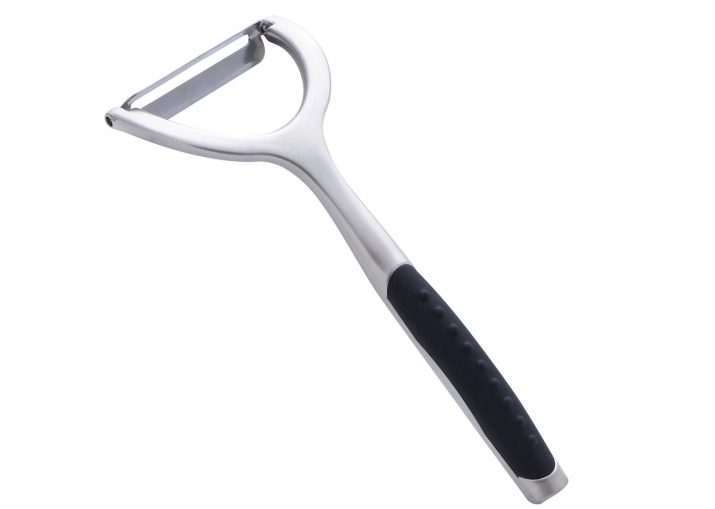
- scissors - used to design thin edges (for example, if you want to make a composition in the form of a flower);
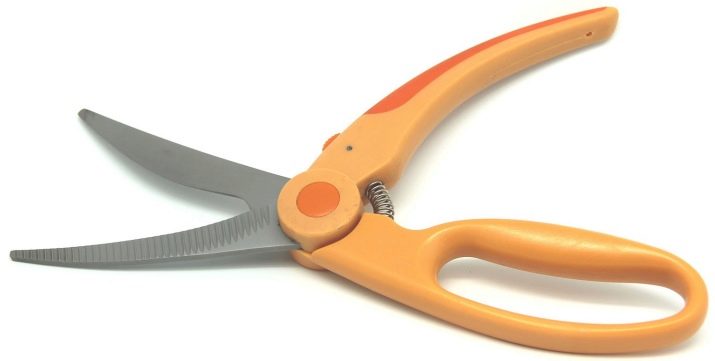
- cutting die cutting - allow you to quickly get a large number of elements of the same type (for example, in the form of flowers, letters or butterflies);
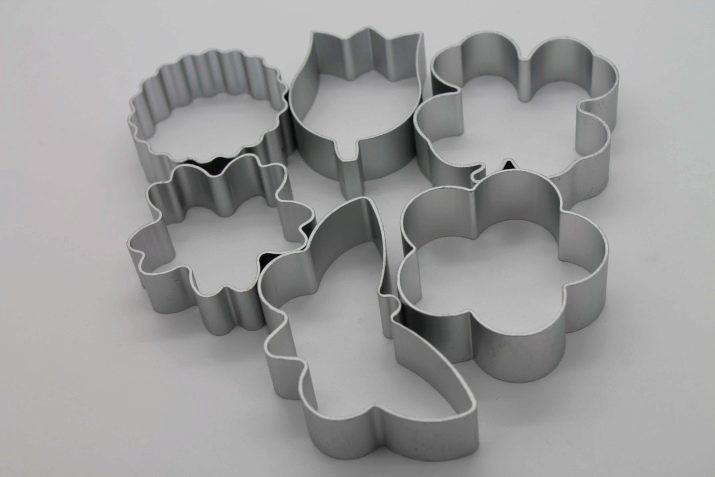
- tweezers - are used for manipulations with thin and small elements;
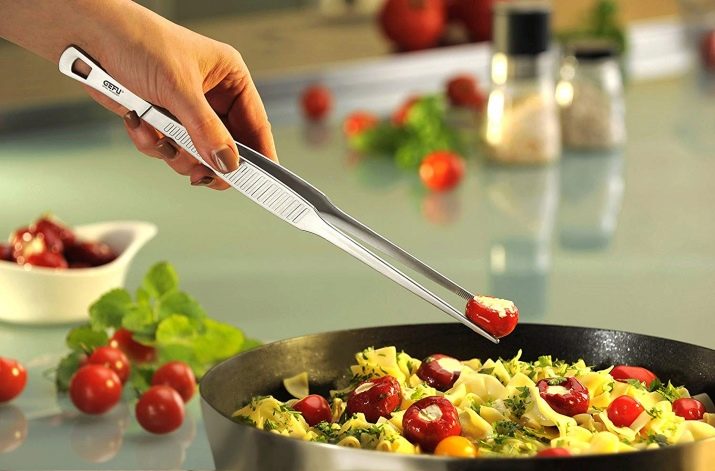
- toothpick sets - allow you to connect the cut parts with each other;
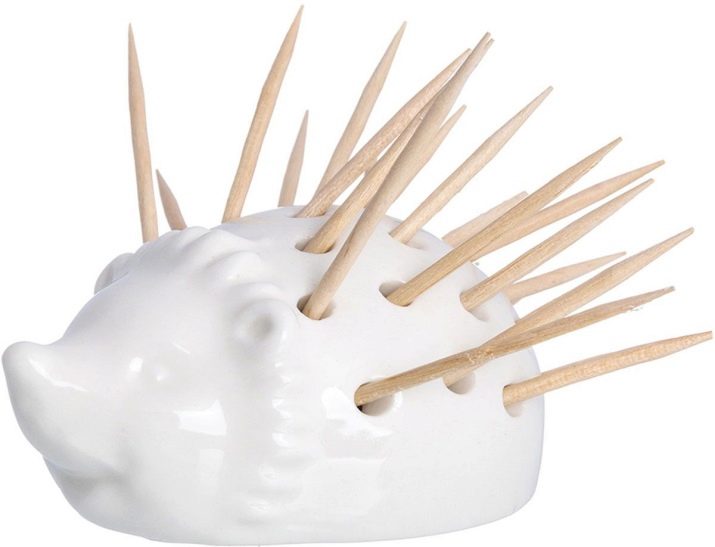
- atomizer - used to preserve the freshness of the finished composition by spraying with water, lemon juice or vinegar;
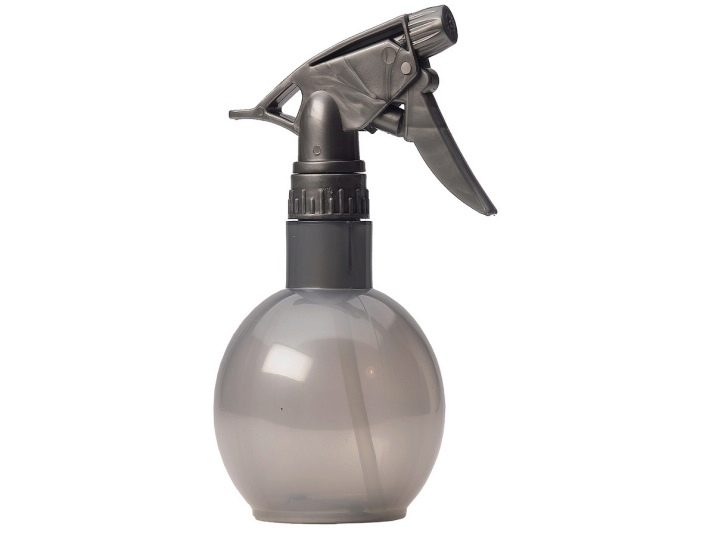
- musat - necessary to maintain the sharpness of the cutting tool blades.
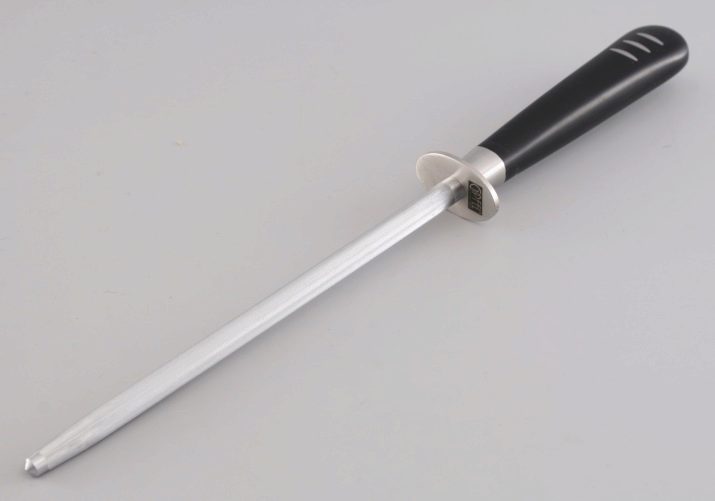
Leading manufacturers
The products of such firms are most popular on the Russian market.
- Wusthof - this German company produces upscale universal knives, as well as carbohydrate and Thai knives, noisettes, vegetable peelers, citrus knives and some other varieties of tools.
Unfortunately, the company does not produce specialized kits for carving, so you will have to purchase its products individually or as part of ordinary kitchen sets.
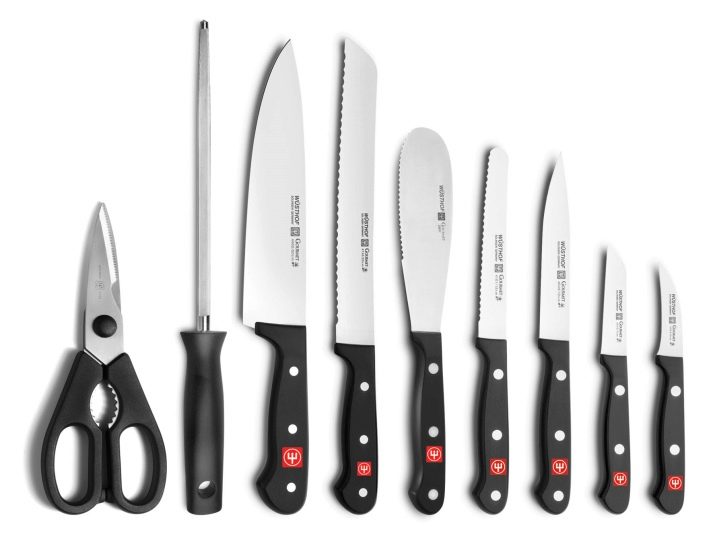
- Messermeister - Another German manufacturer of quality knives that can be successfully used for decorative handicrafts. Like Wusthof, the company does not produce special sets for creativity.
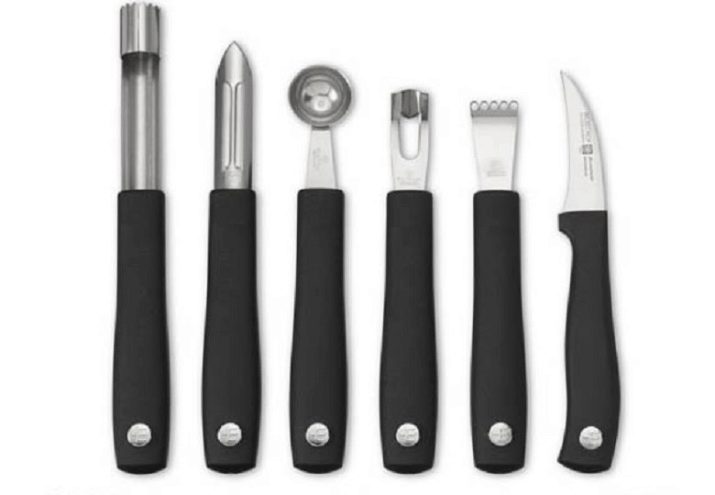
- F. Dick - This German company is engaged in the production of both universal knives and kits for figured cutting of products, which include various types of carving and engraving tools.
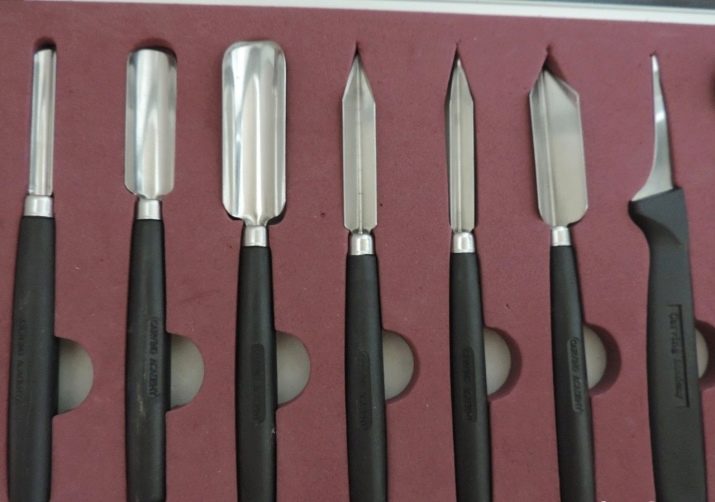
- Borner - produces a wide range of specialized tools for carving, as well as sets of 3 (2 Thai knives and a peeler), 4 (noisette, serpentine cutter, peeler with the possibility of curly cutting and a spiral knife), 9 (Thai, watermelon and universal knives, 3 carbohydrate knives each with triangular and oval profiles) and 11 (straight and sickle-shaped Thai knives, 3 triangular and oval carving tools each, noisette, scissors and a long wagon).
Large kits come with books and DVDs with carving lessons and sample songs.
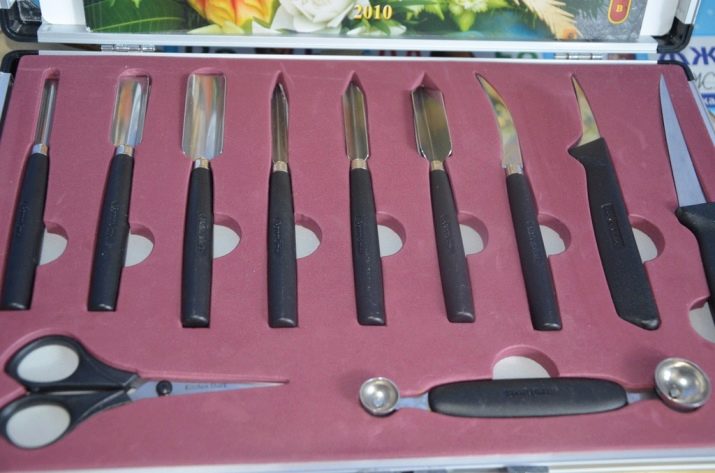
- Triangle - This German company is exclusively engaged in the production of carving tools.
Accordingly, it is her sets that differ in the largest number of different products included in it.
It produces several variations of a set of 8 items, as well as a professional set of 25 products, which includes 17 different types of carving knives of various profiles, a sickle-shaped Thai knife, musat, round and triangular engraving tools and 2 spiral curlers.
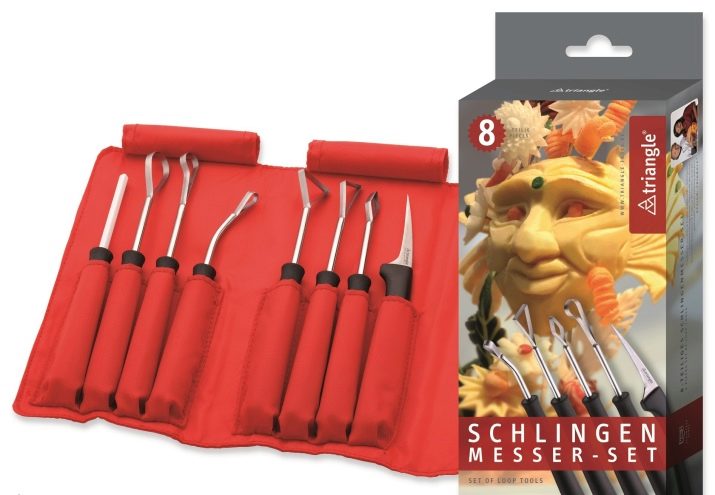
Also on the market is a wide assortment of Chinese kits, which usually consist of a peeler, a platter and several carving knives. Such kits are relatively cheap and well suited for beginners to learn the basics of decorative cutting products.
Selection tips
The first thing to consider when choosing a knife is the material from which its blade is made. For all knives, except universal and sickle Thai, it is desirable that the blade is as hard as possible. But for universal and sickle-shaped tools, it is worth looking for options made of softer and more flexible steel. Pay attention to the thickness of the blade - in most cases, the thinner this tool element, the easier it is for them to work and the finer details can be obtained.
Another important parameter is the material and shape of the handle. Of course, the wooden handle looks elegant and natural, however, in carving kits for a long time mainly handles made of polyamide with a rough surface have been used.

It is such a handle that will provide reliable contact between the tool and your hand, give you complete control over the movements and prevent the knife from slipping out. In addition, it is quite light, durable and safe for health. If possible - try holding the knife in your hand and make sure that the shape of the handle suits you.
The correct balancing of the product is also very important for the result. In most cases, the center of gravity of the carving knives is shifted to the handle, and the mass of the knife rarely exceeds 100 grams. Pay attention to the fact that in the set you are considering there should be as many different forms of carving and engraving knives as possible, otherwise you will either have to spend more time on drawing grooves, or put up with the smaller variety of your compositions.
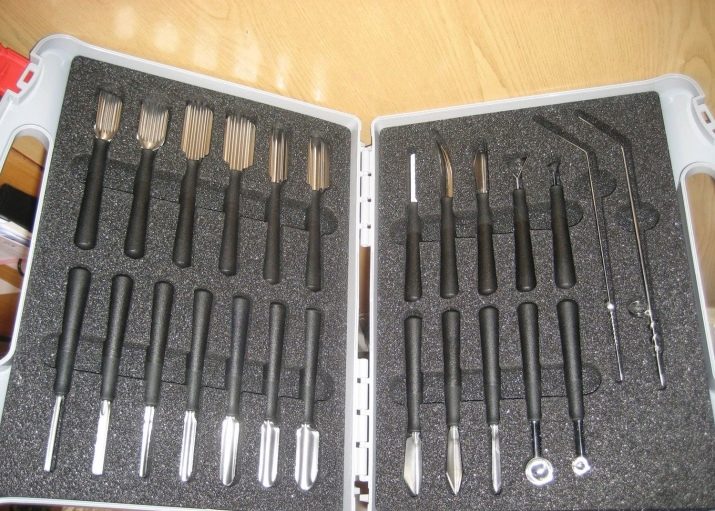
If you are going to expand your set, then you should buy tools of similar quality.
If you are going to learn carving from a teacher, then be sure to consult with him before buying a kit.
How to use?
The technique of using different tools is different. For example, Thai knives are best clamped in the palm of your hand between the thumb and forefinger (like a ballpoint pen). This grip provides maximum control over each movement of the blade. The carving knife can be used in the same manner, and to get deep holes, grasp its handle, as if it were an ordinary knife.
Since high-quality knives for cutting decorative compositions are made of hard steel, which is relatively brittle, it is worth protecting these tools from falls and other sharp mechanical influences.
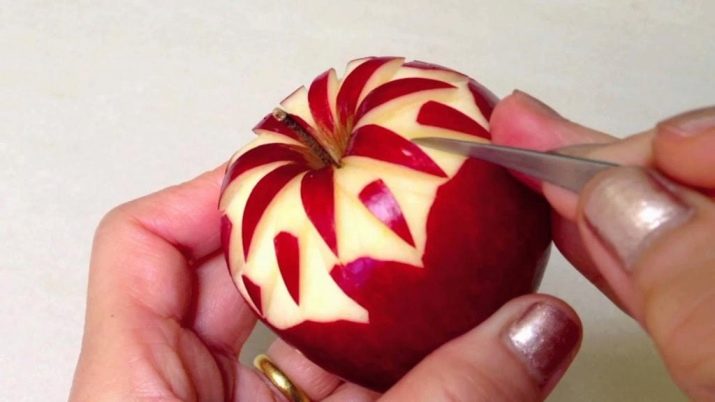
With regular work it is important to monitor the safety of sharpening your tools. Given the fact that the correct angle of sharpening the blade on thin engraving, carving and Thai products from good manufacturers is often set using a laser, you should avoid turning this tool yourself and trust this to professionals.
Thicker and coarser options can be sharpened independently using thin files or mini-musat. In the process of turning, make sure that the cutting edge remains parallel to the surface of the grinding tool. Wherein no need to rush, try to make smooth translational movements with a knife across the musat.
Overview of carving knives see below.










